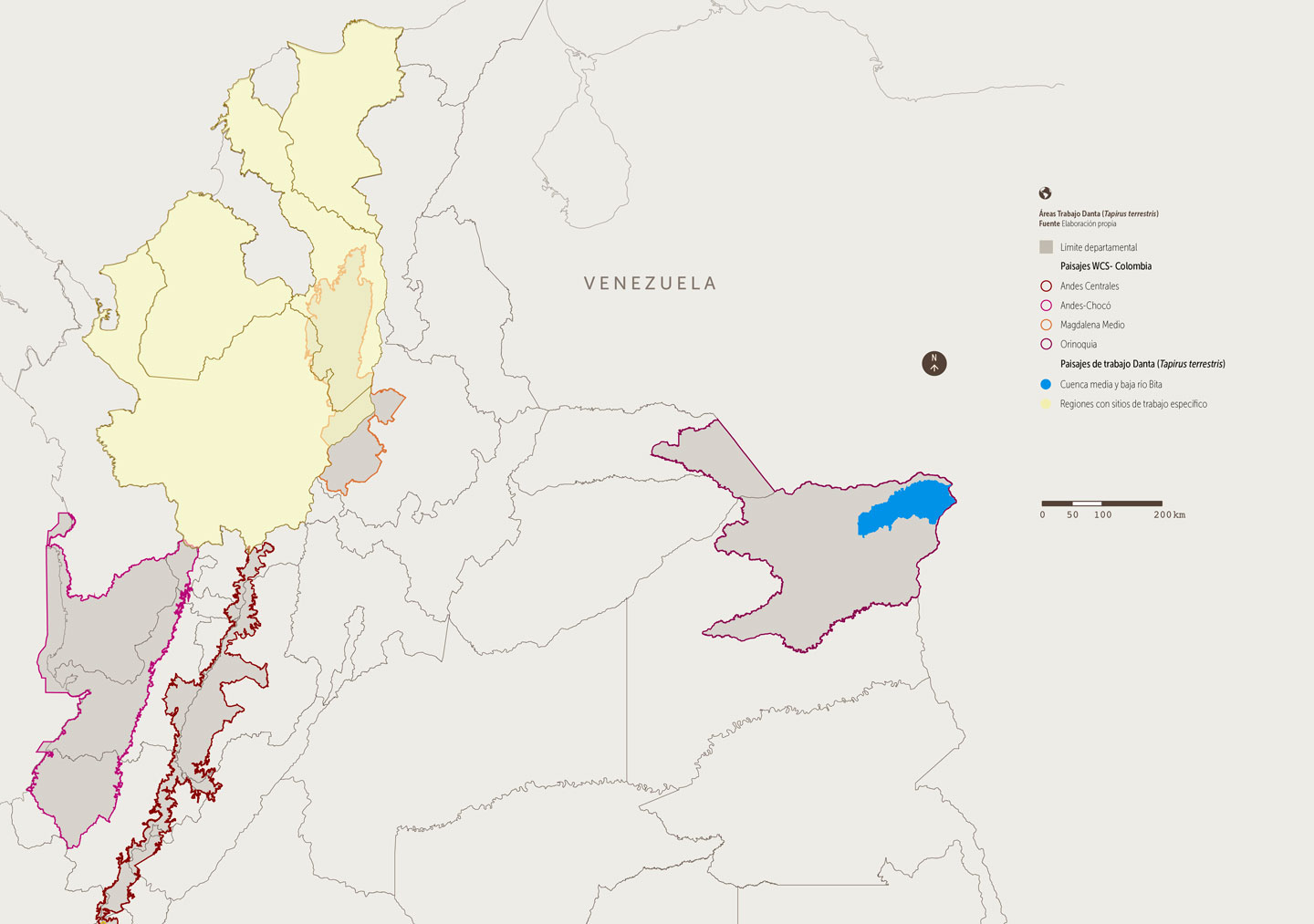Tapirus terrestris
Also known as the Amazonian tapir or Brazilian tapir, it is the largest land mammal in South America. It has a robust, heavy body covered with short, dark brown to black fur. A distinctive feature of tapirs is their proboscis—a long, flexible structure that is an extension of the upper lip and nose, which they use to grasp and manipulate food.
Adults can reach up to 2.5 meters in length, 1 meter in shoulder height, and weigh between 150 and 300 kilograms. Their legs are short but strong, with three toes on each foot adapted for walking in the muddy, dense terrains of the tropical rainforest.
The lowland tapir plays a crucial role in its ecosystem as a seed disperser. Its diet is primarily frugivorous, but it also consumes leaves, shoots, and branches. By eating a variety of fruits and vegetation, the seeds pass intact through its digestive system and are excreted in different parts of the forest, aiding the regeneration and dispersal of many plant species.
This ecological function is essential for maintaining the biodiversity and structure of the tropical forest. In terms of distribution, Tapirus terrestris inhabits a wide range of habitats, from the humid rainforests of the Amazon to dry forests and savannas in South America, covering territories in Brazil, Colombia, Venezuela, Peru, and Bolivia. Its activity is primarily nocturnal and crepuscular, and it is generally a solitary species, except during the breeding season or when a female is caring for her young.
 Foto: "EL PATO" Salcedo / WCS Colombia
Foto: "EL PATO" Salcedo / WCS Colombia
Threat Status
The lowland tapir is classified as Vulnerable (VU) on the International Union for Conservation of Nature (IUCN) Red List of Threatened Species. This classification indicates that the species faces a high risk of extinction in the wild due to factors such as habitat loss, hunting, and population fragmentation.
In Colombia, it is also considered Vulnerable. The main threats to this species in the country include deforestation for agriculture and livestock, illegal hunting, and infrastructure development that fragments its natural habitat.
Its conservation requires the implementation of measures to protect its habitats, the promotion of sustainable practices, and the education and awareness of local communities about the importance of this species for the ecosystem.
What we do for its protection
WCS has been working for the conservation of this species since 2014 in the Orinoquía region, in partnership with the Fundación Orinoquia Biodiversa (FOB), and in the Magdalena Medio region, with restoration actions aimed at connecting forest fragments that serve as habitats for the species.
In the Orinoquía region, the Tapir Conservation Corridor is being promoted in the Bita River basin in Vichada. Through conservation agreements and private nature reserves, the preservation and restoration of its habitats are being ensured. These strategies, together with collaborative work with landowners and communities, have reduced hunting and increased the appreciation and value of the species among local communities.

Thanks to the implemented measures, more than 25 conservation agreements have been established, and at least 12 private nature reserves have been registered. Additionally, an area of over 70,000 hectares has been designated for the species' protection.
These recent efforts in favor of the mammal, which have helped maintain its habitat occupancy, have been led by the Wildlife Project (PVS), which has been active in a part of the Orinoquía region.
Translated with AI support